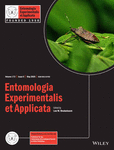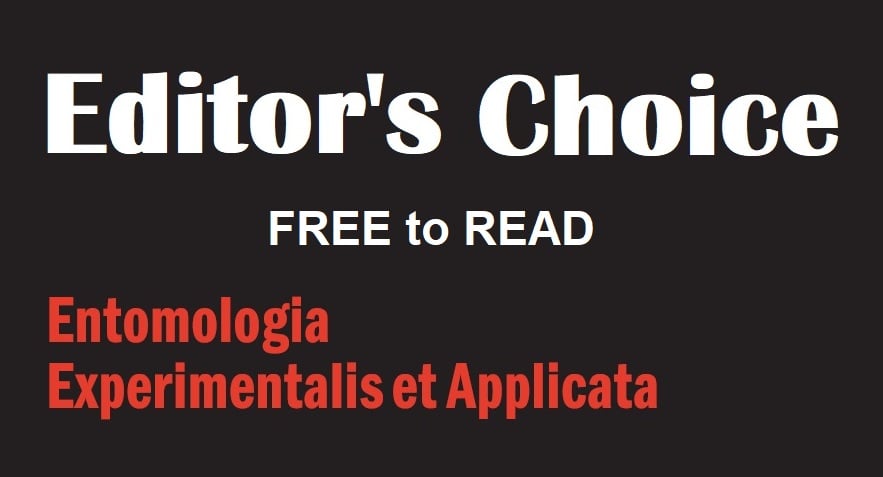Entomologia Experimentalis et Applicata
Journal list menu
Export Citations
Download PDFs
ISSUE INFORMATION
NOTE FROM THE EDITOR
Editor's Choice: May 2025
- Page: 337
- First Published: 19 March 2025
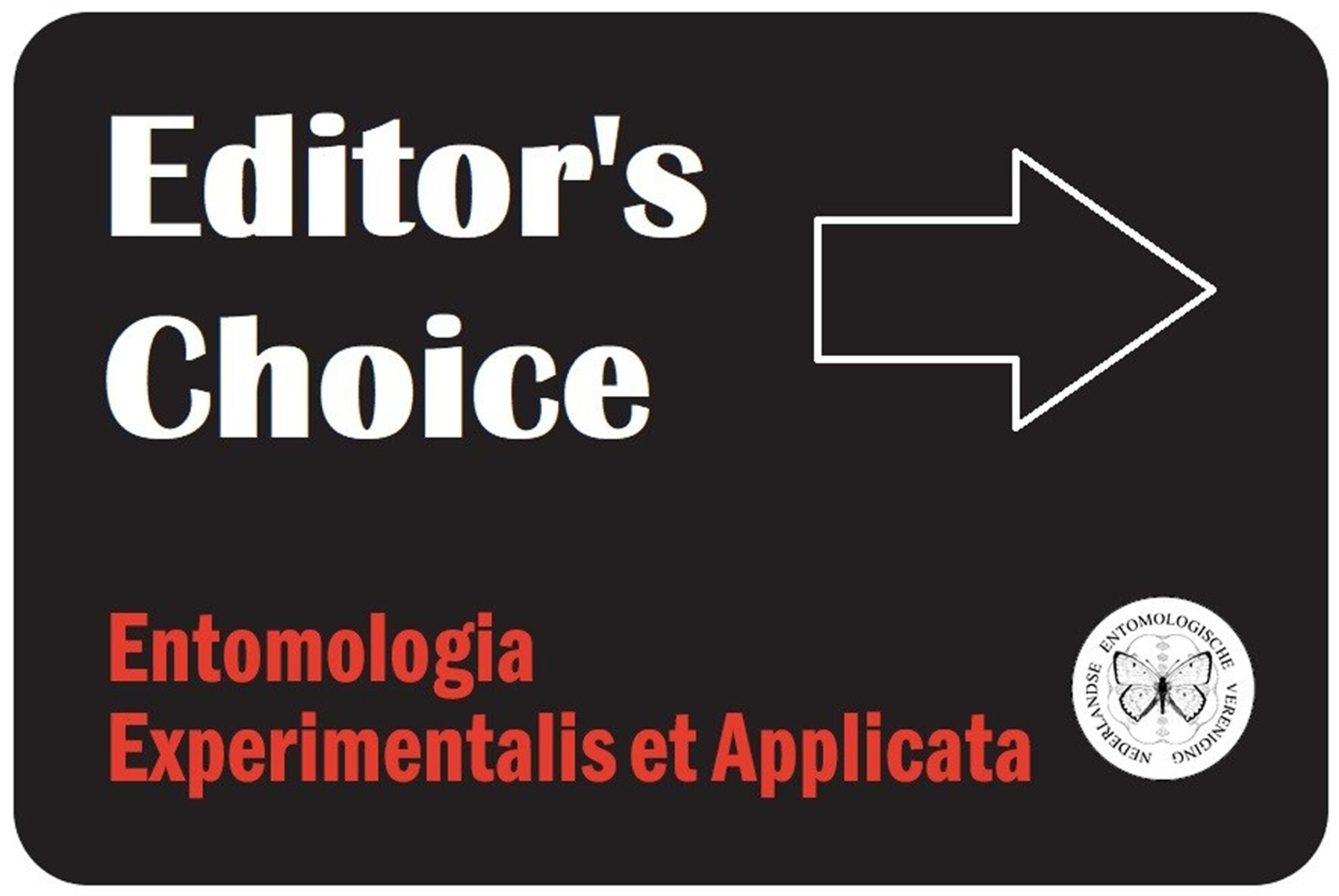
Thermal performance drifts between the egg-parasitoid Telenomus remus and the fall armyworm may threaten the efficacy of biological control under climate change—M. Mubayiwa, H. Machekano, B. M. Mvumi, W. A. Opio, B. Segaiso, F. Chidawanyika, & C. Nyamukondiwa (https://doi.org/10.1111/eea.13557).
HOST-PARASITOID INTERACTION
Thermal performance drifts between the egg parasitoid Telenomus remus and the fall armyworm may threaten the efficacy of biological control under climate change
- Pages: 338-350
- First Published: 13 March 2025
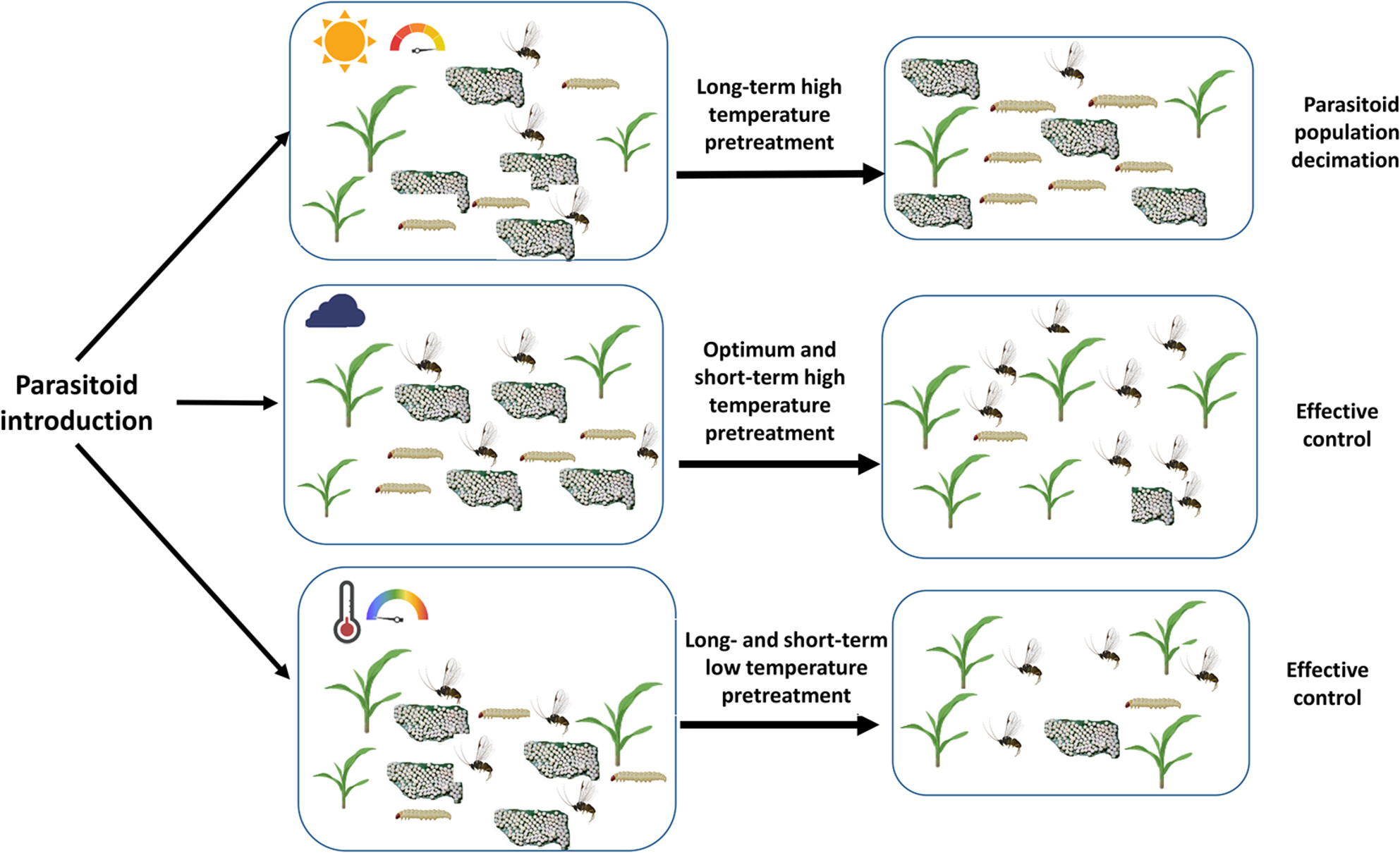
High-temperature acclimation pretreatment increased the parasitoid, Telenomus remus's heat tolerance, but these responses were lower than basal levels of fall armyworm, the host. High-temperature acclimation also reduced the parasitoid's efficacy on fall armyworm eggs. Sub-optimal high- and low-temperature stress significantly reduced T. remus cold tolerance and fall armyworm egg hatchability. High-temperature stress environments may, thus, offset T. remus population and biocontrol efficacy in rapidly changing climates.
Wax moth larvae demonstrate a high level of humoral immunity after envenomation by parasitoid Habrobracon hebetor
- Pages: 351-360
- First Published: 13 March 2025
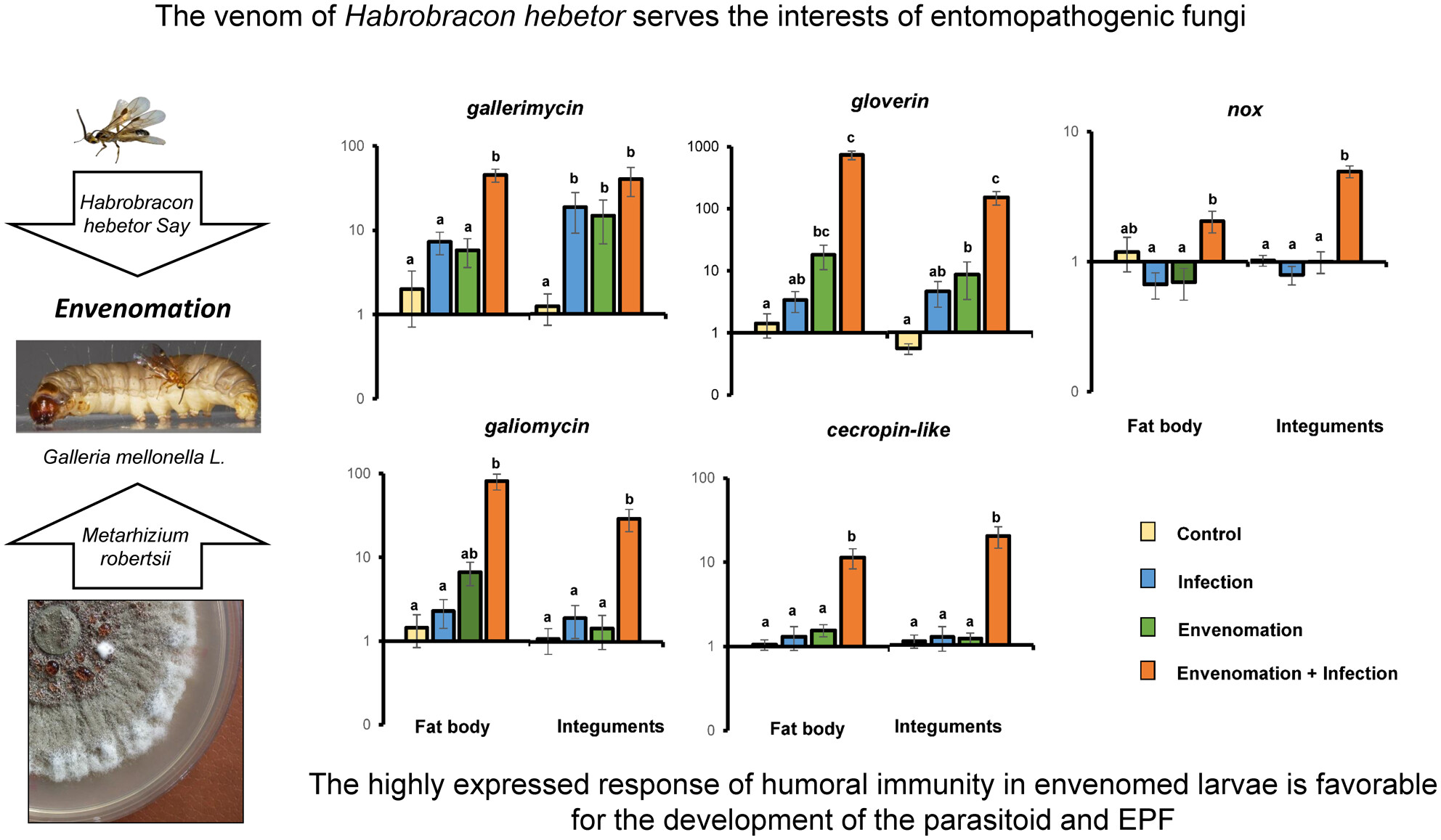
We studied immune parameters in Galleria mellonella (Lepidoptera: Pyralidae) larvae envenomated by Habrobracon hebetor (Hymenoptera: Braconidae), infected with the entomopathogenic fungus Metarhizium robertsii (Hypocreales), or a combination of these treatments. The envenomated larvae responded to fungal infection through upregulation of genes encoding antimicrobial peptides, NADP-H oxidase 4, and inhibitor of apoptosis proteins in the fat body and/or integument. The upregulation of humoral immune response genes in envenomated larvae may be favorable for parasitoid and entomopathogenic fungal development.
Optimizing field collection and laboratory conservation of the parasitoid Trichomalus perfectus before release against the cabbage seedpod weevil Ceutorhynchus obstrictus
- Pages: 361-375
- First Published: 10 March 2025
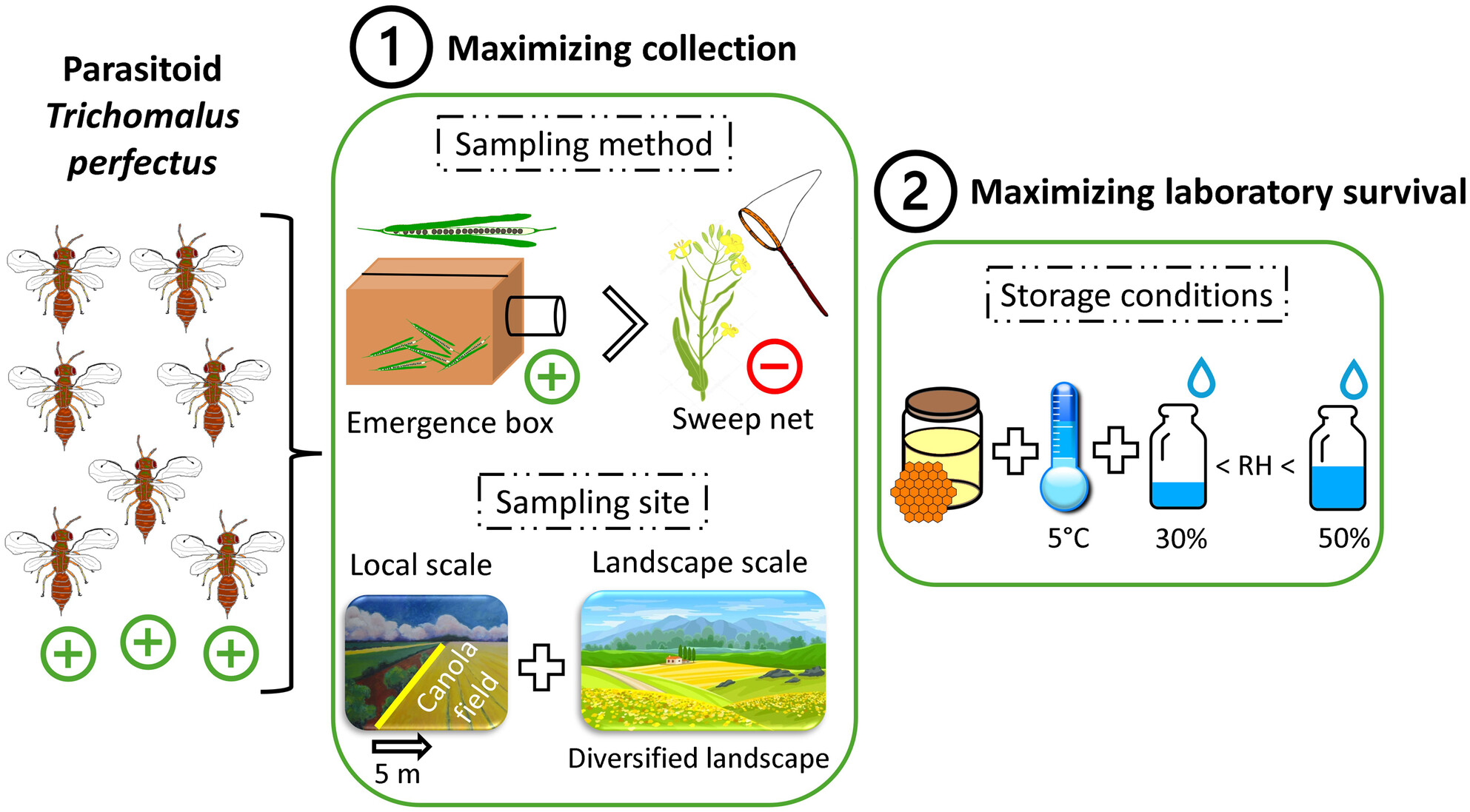
This study aimed to optimize Trichomalus perfectus (Hymenoptera: Pteromalidae) parasitoid field collection (sampling methods, local, and landscape scale analysis) and laboratory conservation before field release against Ceutorhynchus obstrictus (Coleoptera: Curculionidae). Pod collection provided better results than sweeping net in canola (Brassica napus L., Brassicaceae) fields. Pod collection along all field edges, without specific targeting of adjacent environments, proved effective, maintaining a 5-m distance. A more diversified landscape yielded more parasitoids. Female parasitoid survival was highest with a protein-free diet and cold storage for ≥3 months at 5°C and 30%–50% RH.
Three-dimensional flight analysis shows associative learning enhances foraging behavior of the specialist parasitoid, Microplitis croceipes
- Pages: 376-385
- First Published: 20 March 2025

Using flight tunnel and behavioral tracking software, which records the flight behavior of insects in three dimensions, the flight behaviors of naïve and experienced parasitoids to host-related odors (α-pinene and α-farnesene) were recorded, and relevant flight-related parameters were compared. Associative odor learning led to a more directly oriented upwind flight toward odor sources, as experienced Microplitis croceipes females optimized their flight behavior to locate the odor source more quickly, with less frequent turns and counterturns than naïve females.
ORIGINAL ARTICLE
Repellence of δ-nonalactone in German cockroaches of different stages, sexes, and ages
- Pages: 386-392
- First Published: 27 February 2025
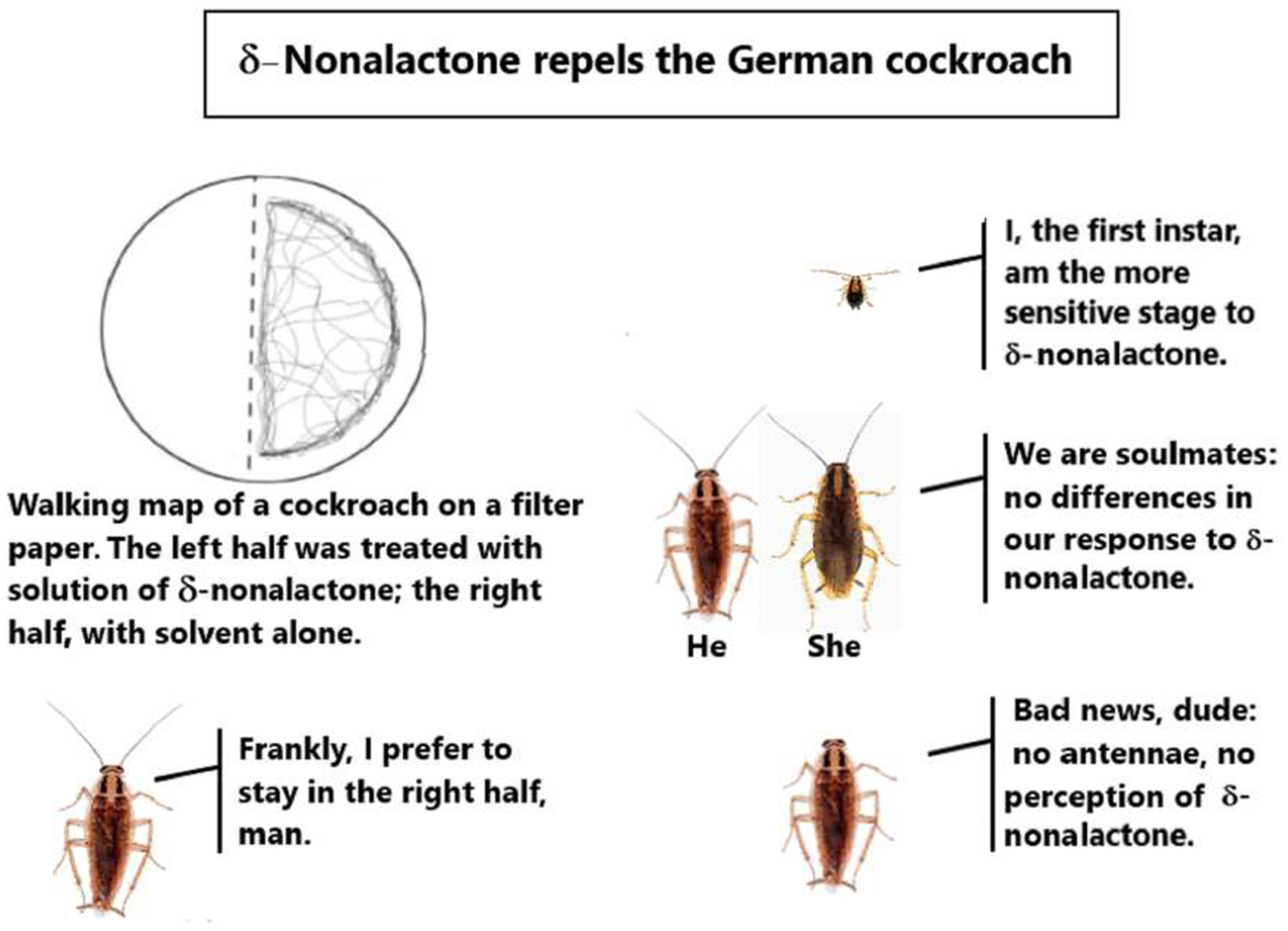
Small, medium, and large nymphs of the German cockroach, as well as adult males and females, were exposed to δ-nonalactone. Small nymphs were most sensitive to the repellent effect of δ-nonalactone. There were no differences between the responses of males and females, nor in adult males aged ranging between less than 6 h to 90 days old. The repellent effect was not manifested in antennectomized cockroaches.
Sexual calling behaviour, and the effects of immediate mating history and consexual presence in the seven-spot ladybird, Coccinella septempunctata
- Pages: 393-402
- First Published: 06 March 2025
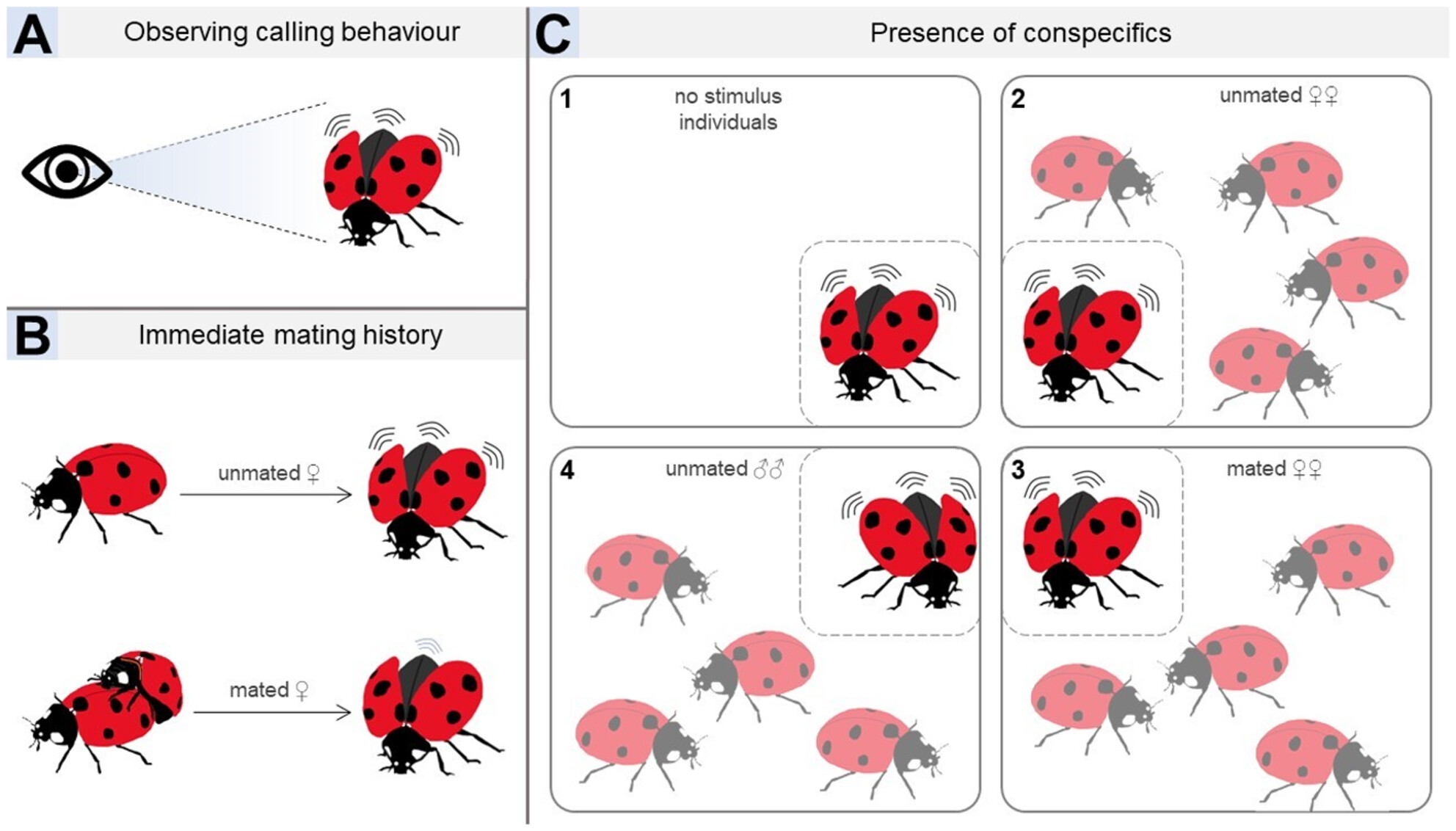
To attract mates, several coleopteran taxa release volatile sex pheromones via a behaviour termed calling. We studied a postulated calling behaviour in the seven-spot ladybird Coccinella septempunctata L. for the first time. We also investigated the effects of immediate mating history and the presence of conspecifics on calling behaviour. Only female ladybirds called and did so significantly less after mating. In contrast, the presence of male or female conspecifics did not affect calling behaviour.
Characterizing brown marmorated stink bug, Halyomorpha halys Stål, host plant usage and acceptability: Methodological strengths and shortcomings
- Pages: 403-416
- First Published: 11 March 2025
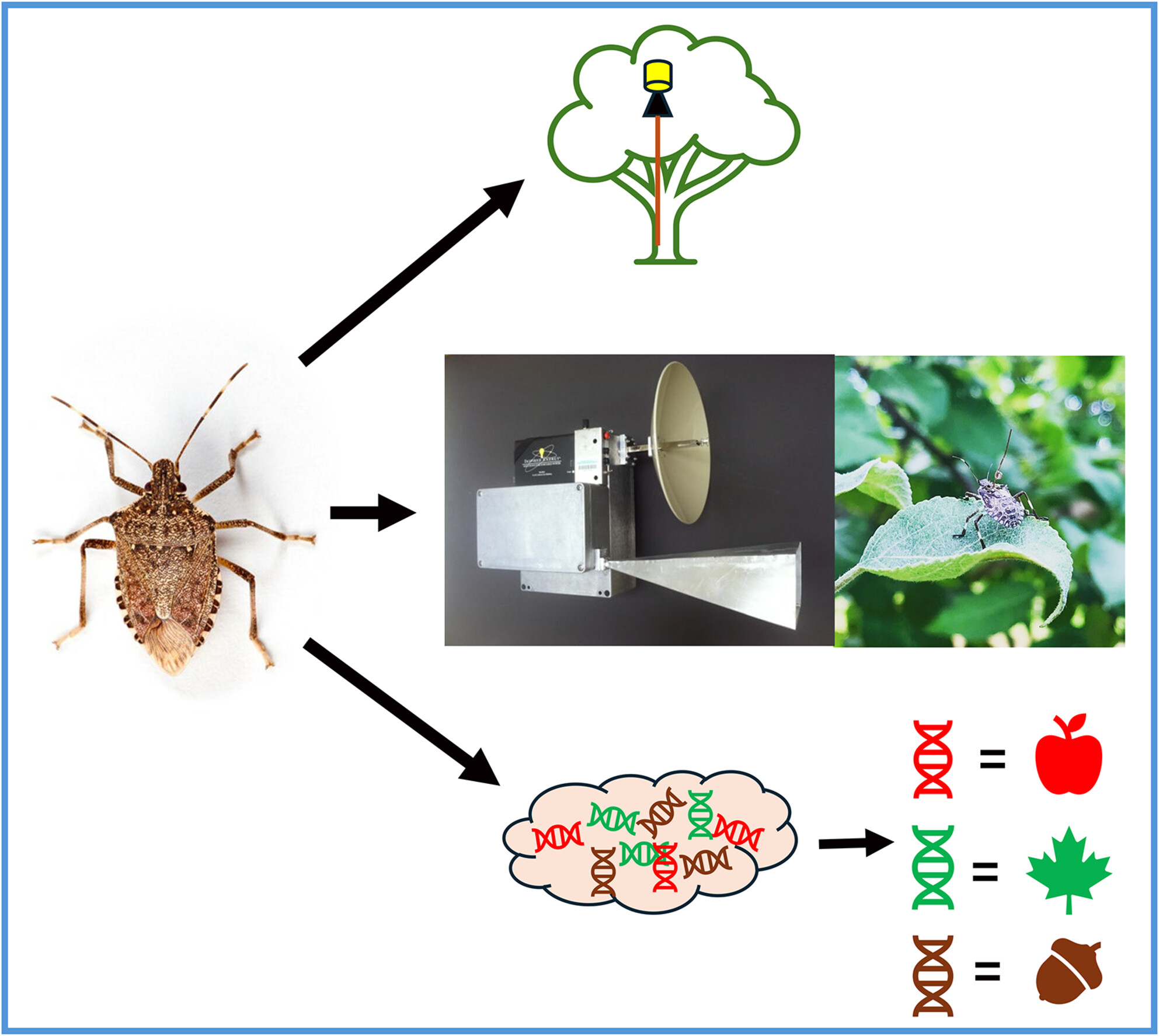
We compared three tools for assessing invasive brown marmorated stink bug, Halyomorpha halys (Hemiptera: Pentatomidae), host plant usage. Baited traps were deployed to measure populations in tree canopies but found no differences. We tagged insects to track their retention on fruit hosts using harmonic radar; peach and baited apple trees were acceptable hosts. We assessed gut contents using molecular tools to identify food plants. Combining harmonic radar with molecular gut content analysis can provide a thorough assessment of pest host use patterns.
Irradiated males of the mosquito Aedes aegypti as disseminators of the entomopathogenic fungi Beauveria bassiana and Metarhizium anisopliae under laboratory conditions
- Pages: 417-424
- First Published: 14 March 2025
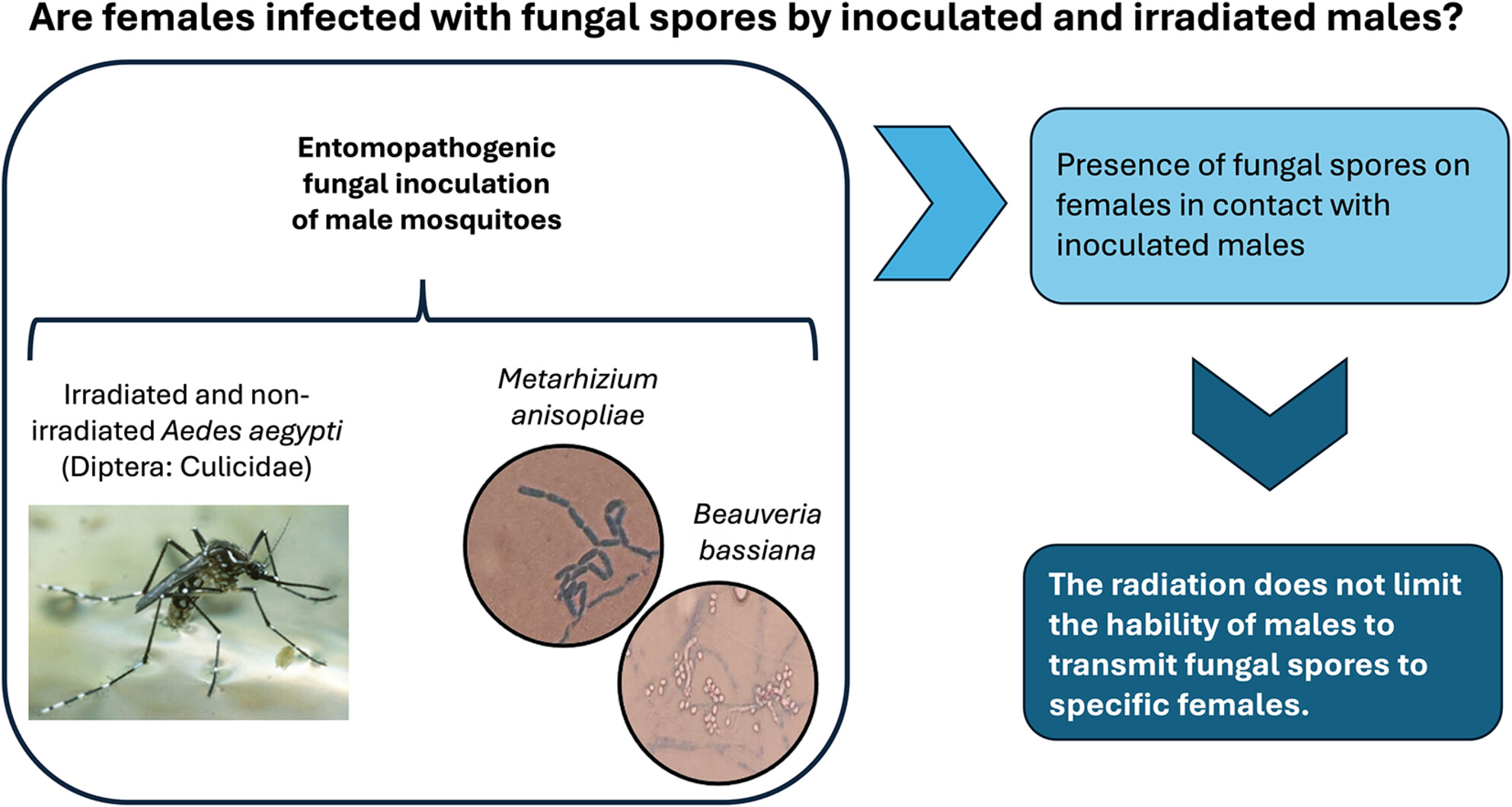
We studied the potential combination of the sterile insect technique (SIT) and entomopathogenic fungi for the control of Aedes aegypti (Diptera: Culicidae), the main transmitter of dengue, chikungunya, and Zika. Irradiated Ae. aegypti males were able to transport and transmit an infection of both Beauveria bassiana (Ascomycota) and Metarhizium anisopliae (Ascomycota) entomopathogens to conspecific females. The irradiation of males affected the mating behavior, but this did not represent a limitation for the combination of both control strategies for disease-carrying mosquitoes.
Size and sex in early developmental stages in a frog-biting mosquito
- Pages: 425-434
- First Published: 20 March 2025
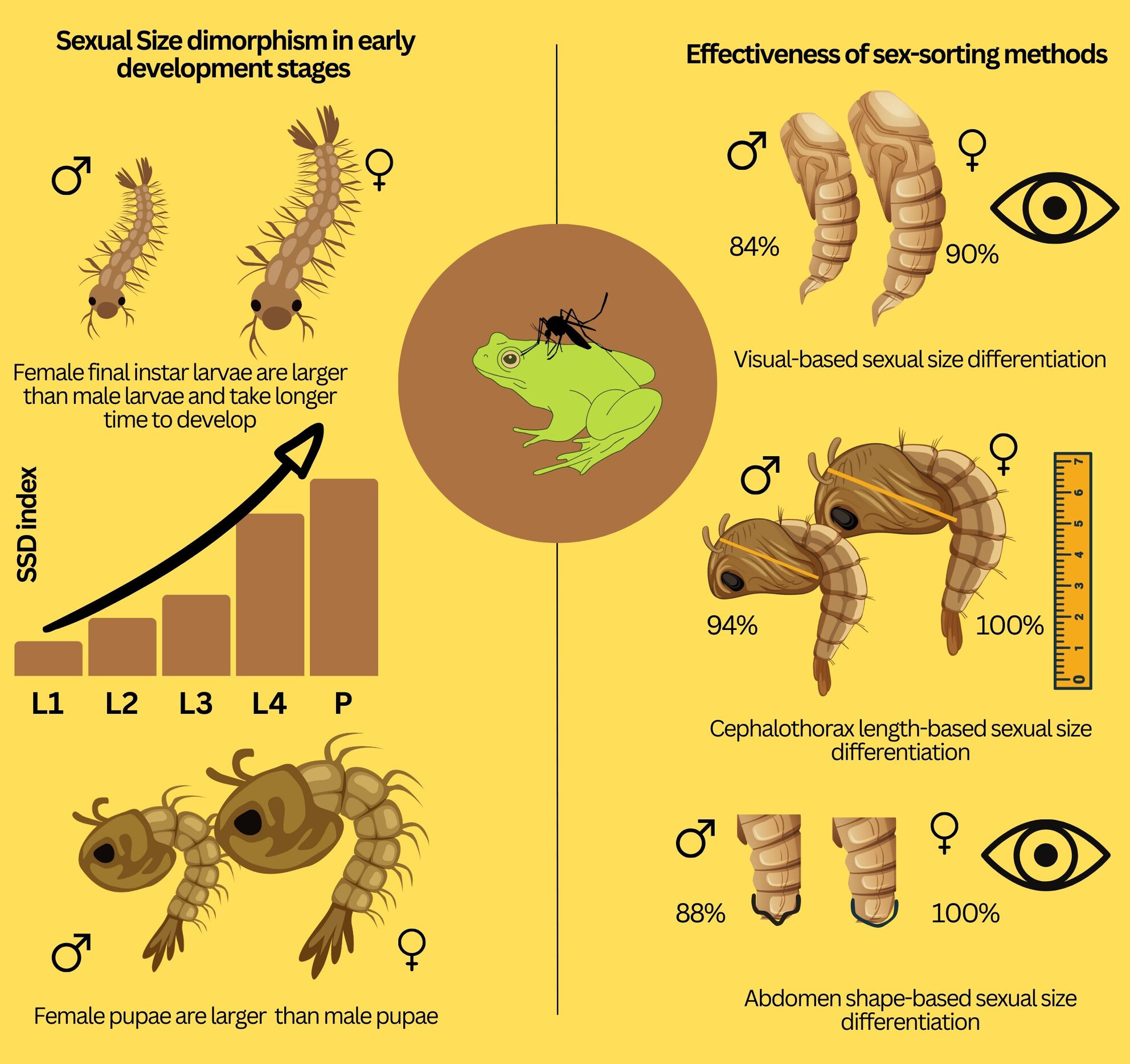
Our knowledge of the morphological scaling of body parts over development across sexes in mosquitoes mainly focuses on well-studied anthropophilic species, leaving a noticeable gap in our understanding of the developmental biology of mosquitoes with limited medical consequences. The present study fills the gap by examining larval and pupal stages in Uranotaenia lowii, a frog-biting mosquito, focusing on traits that allow sex identification to evaluate various sex-sorting techniques that provide a foundation for experimental manipulation.
From nature to nurture: Shifts in the gut microbiota of the brown marmorated stink bug under laboratory rearing conditions
- Pages: 435-441
- First Published: 24 March 2025
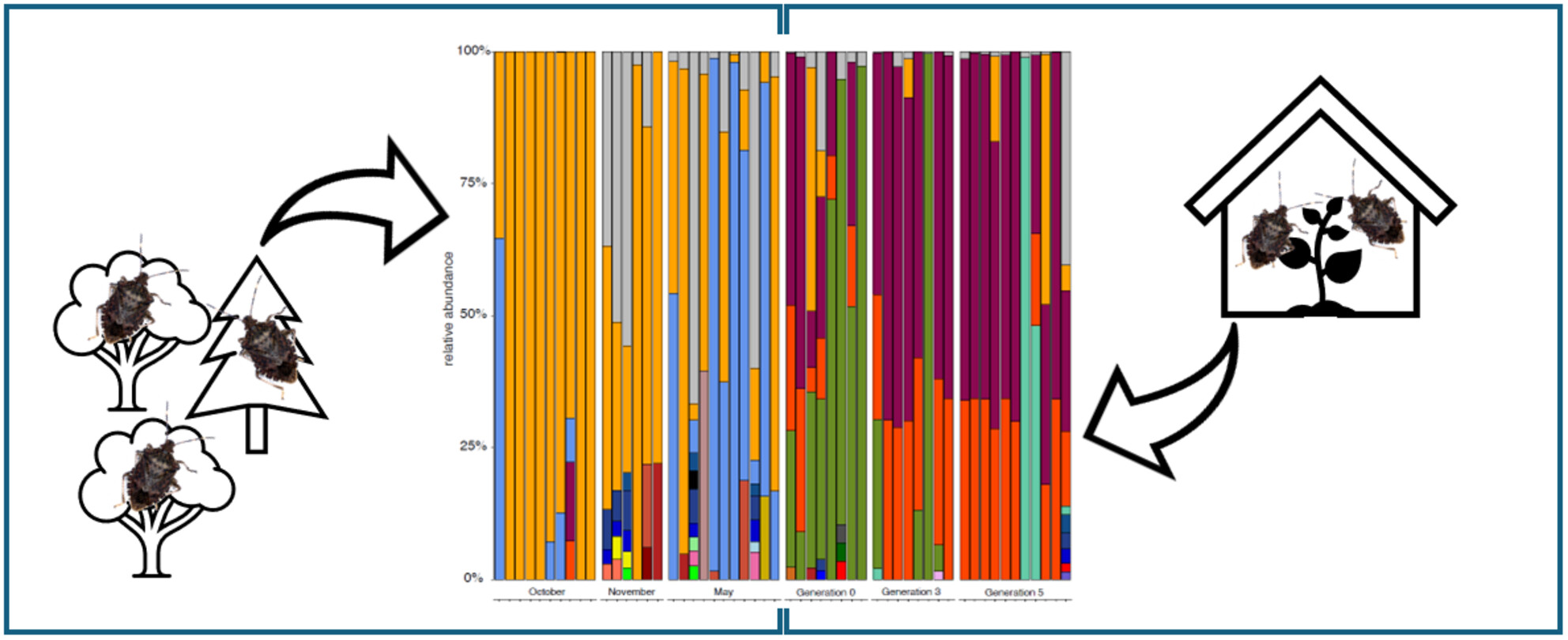
The gut microbiota composition of the invasive pest species Halyomorpha halys was compared between individuals collected in the field and reared in the laboratory based on 16S rRNA gene sequencing. Alpha and beta diversity change significantly from field-collected to laboratory-reared individuals and continue to change over the different generations of the rearing. The primary symbiont Pantoea was lost and replaced by unclassified Enterobacteriaceae and Yersiniaceae, highlighting a potential influence of the gut microbiota on the fitness of H. halys.




